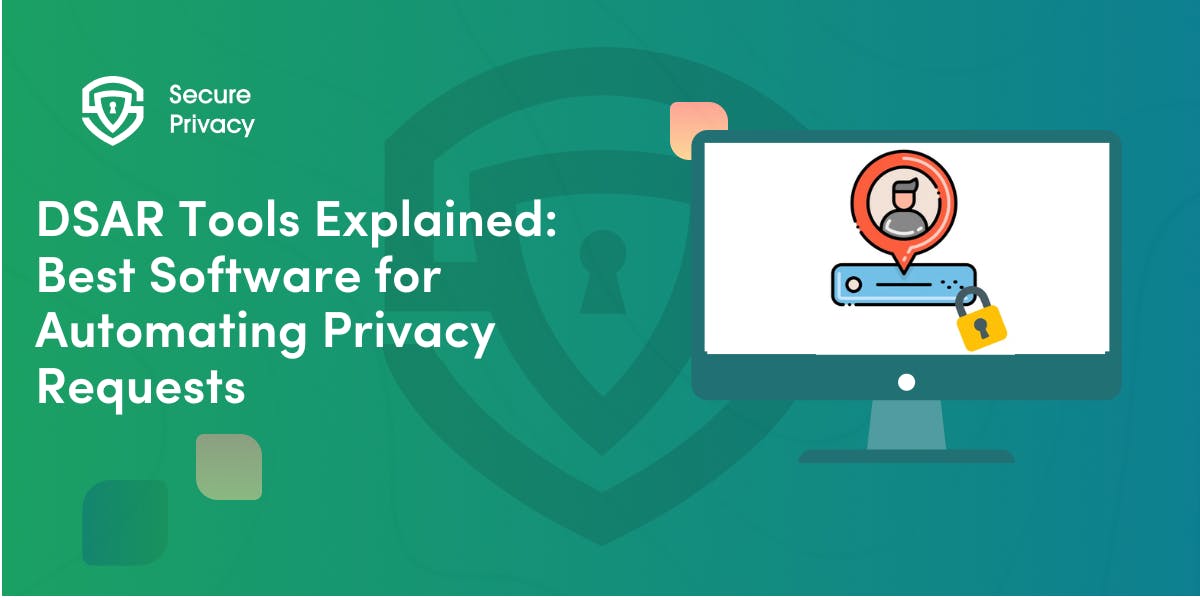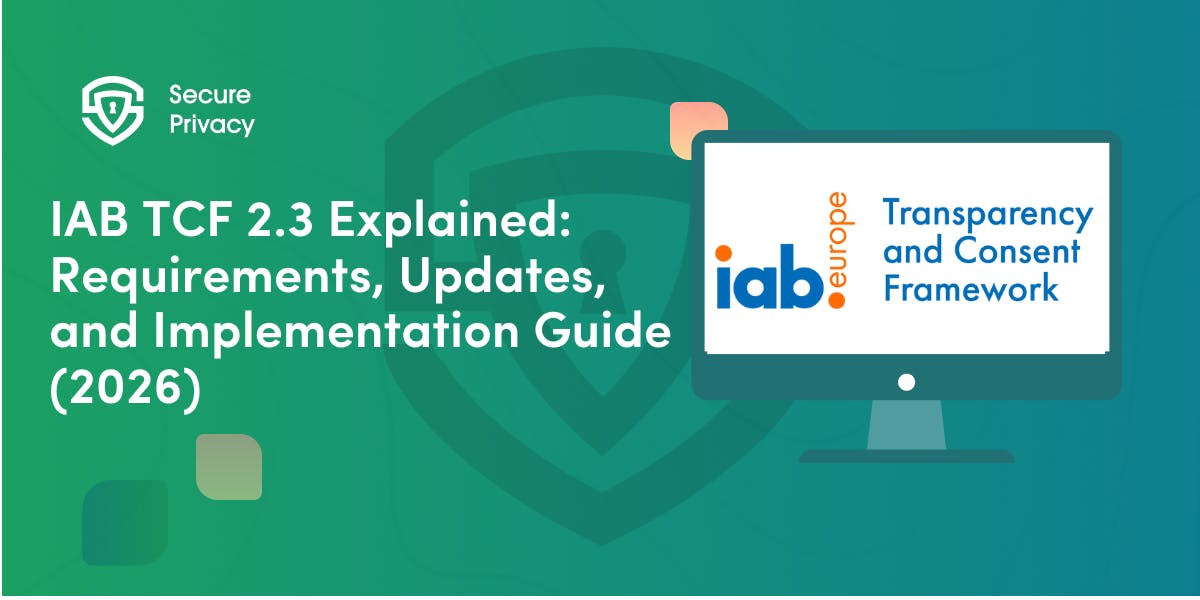Cross Border Data Transfers: Global 2025 Guide
In today's interconnected business environment, cross-border data transfers are essential for international operations, yet they present significant compliance challenges due to varying data protection laws worldwide. Companies must balance operational needs with regulatory requirements while maintaining robust data security practices.
Why Compliance is Crucial
Organizations that handle personal data across borders face multiple pressures beyond just meeting legal requirements. Protecting individuals' privacy rights forms the foundation of ethical data management and supports broader business objectives in several ways.
- Protecting Personal Data: Safeguarding individuals' private information isn't just a legal obligation—it's a fundamental responsibility that respects privacy rights and builds customer confidence.
- Avoiding Penalties: Non-compliance can be financially devastating, with fines reaching up to €20 million or 4% of global annual turnover under GDPR, potentially crippling businesses unprepared for regulatory scrutiny.
- Building Trust: Organizations demonstrating commitment to data protection establish stronger relationships with customers who increasingly value privacy protections when choosing service providers.
Key Regulations Governing Data Transfers
The regulatory landscape for cross-border data transfers has become increasingly complex, with different regions implementing distinctive approaches to data protection. Understanding these frameworks is essential for effective compliance strategies.
- GDPR (General Data Protection Regulation): The EU's comprehensive regulation protects personal data within the EU and EEA, imposing strict rules on data transfers with substantial penalties for violations.
- CCPA (California Consumer Privacy Act): This legislation empowers California residents with control over their personal information, setting a precedent for other state-level privacy laws in the US.
- APPI (Act on the Protection of Personal Information): Japan's data protection framework ensures transparent and secure handling of personal information, with specific provisions for cross-border transfers.
- PIPEDA (Personal Information Protection and Electronic Documents Act): Canada's federal privacy law governs how businesses collect, use, and disclose personal information during commercial activities.
- DPDP (Digital Personal Data Protection Act): India's recent legislation (August 2023) balances personal data protection with innovation needs, requiring explicit consent for data processing while permitting cross-border transfers with adequate safeguards.
Global Data Protection Landscape: Regional Comparison
European Union
- Primary Legislation: General Data Protection Regulation (GDPR)
- Key Features:
- Comprehensive rights for data subjects (access, rectification, erasure, portability)
- Strict consent requirements
- Data Protection Impact Assessments for high-risk processing
- 72-hour breach notification requirement
- Data Protection Officers mandatory for certain organizations
- Cross-Border Mechanisms:
- Standard Contractual Clauses (SCCs)
- Binding Corporate Rules (BCRs)
- Adequacy decisions
- Enforcement: Up to €20 million or 4% of global annual turnover
- Notable Cases: Amazon (€746 million), WhatsApp (€225 million)
United States
- Approach: Sector-specific and state-level legislation
- Key Regulations:
- California Consumer Privacy Act (CCPA)/California Privacy Rights Act (CPRA)
- Virginia Consumer Data Protection Act (VCDPA)
- Colorado Privacy Act (CPA)
- Connecticut Data Privacy Act (CTDPA)
- Utah Consumer Privacy Act (UCPA)
- Key Features: Varying rights across states including:
- Right to know/access
- Right to delete
- Right to opt-out of sales/targeted advertising
- Non-discrimination protections
- Cross-Border Approach: No unified federal framework for international transfers
- Enforcement: Varies by state (e.g., CCPA: up to $7,500 per intentional violation)
Asia-Pacific
- Major Frameworks:
- Japan: Act on Protection of Personal Information (APPI)
- South Korea: Personal Information Protection Act (PIPA)
- Singapore: Personal Data Protection Act (PDPA)
- China: Personal Information Protection Law (PIPL)
- Key Features:
- Strong data localization requirements (especially China)
- Consent-focused regimes
- Restrictions on automated decision-making
- Cross-Border Requirements:
- China: Security assessments for certain transfers
- Japan: Adequacy system similar to EU
- South Korea: Mandatory consent for overseas transfers
- Enforcement: Varies by jurisdiction
- China: Up to 5% of annual revenue
- South Korea: Up to 3% of revenue
India
- Primary Legislation: Digital Personal Data Protection Act (DPDP)
- Key Features:
- Explicit consent requirements
- Data fiduciary responsibilities
- Data Protection Board oversight
- Cross-Border Approach: Permitted with adequate safeguards
- Enforcement: Up to ₹250 crore (~$30 million)
Latin America
- Notable Frameworks:
- Brazil: Lei Geral de Proteção de Dados (LGPD)
- Argentina: Personal Data Protection Law
- Chile: Law 19,628 on Privacy Protection [Updated with comprehensive new framework in 2025]
- Mexico's Law on Protection of Personal Data Held by Private Parties (LFPDPPP) [Updated 2025!]
- Peru Personal Data Protection Law [Updated 2025]
- Common Elements:
- GDPR-influenced approaches
- Consent-based processing
- Data subject rights frameworks
- Cross-Border Requirements: Generally permit transfers with appropriate safeguards
- Enforcement: Varies (e.g., LGPD: up to 2% of revenue in Brazil)
These frameworks apply to data collection across all platforms including streaming and connected TV applications like Android TV, which require region-specific consent adaptations.
Middle East & Africa
- Key Developments:
- UAE: Federal Decree Law No. 45/2021
- South Africa: Protection of Personal Information Act (POPIA)
- Saudi Arabia: Personal Data Protection Law
- Emerging Trends:
- Increasing adoption of comprehensive laws
- Growing emphasis on local storage requirements
- Development of regional standards
- Cross-Border Approaches: Mixed, with some requiring specific approval
Global Convergence & Divergence Patterns
- Converging Elements:
- Recognition of basic data subject rights
- Accountability requirements for organizations
- Breach notification obligations
- Diverging Elements:
- Scope of sensitive data categories
- Approach to automated decision-making
- Enforcement mechanisms and penalty structures
- Data localization requirements
The global data protection landscape varies significantly by region, requiring organizations to develop nuanced compliance strategies that accommodate these differences while maintaining consistent privacy standards.
- EU: GDPR establishes the world's most comprehensive data protection framework, requiring robust safeguards for cross-border transfers and imposing significant penalties for non-compliance.
- US: With no comprehensive federal privacy law, organizations must navigate a patchwork of state regulations with CCPA leading the way in establishing consumer data rights.
- Asia: Countries like Japan and South Korea have implemented GDPR-like protections, while others like China focus heavily on data localization requirements, creating a complex regional landscape.
Challenges in Cross-Border Data Transfers
Organizations handling international data flows face multiple obstacles that impact operational efficiency, compliance costs, and security posture when transferring personal information across jurisdictions.
- Divergent Regulations: The varying requirements across jurisdictions create compliance complexities that demand considerable legal expertise and resources.
- Data Localization Requirements: Countries including China and Russia mandate local storage of certain data types, forcing organizations to invest in regional infrastructure and adjust data architectures.
- Security Risks: Data in transit faces increased vulnerability to interception and unauthorized access, requiring enhanced protection measures during transfers.
Best Practices for Ensuring Compliance
Successful navigation of cross-border data transfer requirements demands a proactive, structured approach to compliance that incorporates regular assessment and adaptation to regulatory changes.
- Conduct Regular Audits: Systematic reviews of data transfer practices help identify compliance gaps before they become regulatory violations.
- Implement Robust Security Measures: Employing encryption, access controls, and other technical safeguards protects data during transfer and storage.
- Stay Updated: Continuous monitoring of regulatory developments ensures compliance strategies remain effective as data protection laws evolve globally.
Role of Data Transfer Mechanisms
Formal data transfer mechanisms provide legally recognized frameworks for moving personal data across borders while maintaining appropriate protection standards that satisfy regulatory requirements.
- Standard Contractual Clauses (SCCs): These contractual templates approved by the European Commission establish legally binding data protection commitments for transfers to countries without adequacy decisions.
- Binding Corporate Rules (BCRs): For multinational organizations, these internally developed policies create consistent data protection standards for transfers within the corporate family.
- Adequacy Decisions: When the EU recognizes a non-EU country's data protection framework as adequate, organizations can transfer data without additional safeguards, simplifying compliance.
Impact of Data Localization Requirements
Data localization mandates create practical challenges for global organizations by restricting where and how personal information can be stored and processed, affecting technology strategies and operational models.
- Increasing Costs: Local data storage requirements force organizations to invest in country-specific infrastructure rather than leveraging centralized or cloud-based solutions.
- Creating Compliance Burdens: Managing data across segregated systems complicates governance and increases the risk of inconsistent protection standards.
- Limiting Flexibility: Restrictions on data movement constrain organizations' ability to implement unified systems and processes across global operations.
Ensuring Data Security and Privacy
Beyond regulatory compliance, protecting personal information requires comprehensive security measures across the entire data lifecycle, particularly during vulnerable cross-border transfers.
- Using Encryption: Strong encryption prevents unauthorized access during data transfers, addressing a key vulnerability in cross-border information flows.
- Implementing Access Controls: Limiting data access to authorized personnel reduces the risk surface and helps demonstrate compliance with purpose limitation principles.
- Conducting Risk Assessments: Regular evaluation of potential threats allows organizations to adjust security measures based on evolving risks and vulnerabilities.
Tools and Technologies for Managing Transfers
Modern compliance management relies increasingly on specialized tools that help organizations track data flows, implement protections, and demonstrate regulatory adherence during cross-border transfers.
- Data Mapping Tools: These solutions provide visibility into cross-border data movements, supporting compliance documentation and risk assessments.
- Compliance Management Platforms: Automated compliance tracking helps organizations monitor adherence to multiple regulatory frameworks simultaneously.
- Encryption Software: Purpose-built security tools protect sensitive information throughout the transfer process while maintaining usability.
Conclusion
Navigating cross-border data transfers in today's regulatory environment requires organizations to balance compliance requirements with operational needs. By understanding applicable regulations, implementing appropriate transfer mechanisms, and deploying robust security measures, businesses can protect personal data while maintaining essential international data flows. Continuous monitoring of regulatory developments and regular assessment of compliance programs remain essential as global data protection laws continue to evolve.
Get Started For Free with the
#1 Cookie Consent Platform.
No credit card required

What is Cookie Consent? A Quick 2026-Ready Glance
Your website loads. Cookies track users. But without proper cookie consent, you're violating GDPR — risking fines up to €20 million or 4% of global revenue. Cookie consent is the legally required mechanism by which websites obtain explicit user approval before deploying non-essential tracking technologies. This requirement stems from GDPR Article 4(11) and the ePrivacy Directive, mandating that consent must be freely given, specific, informed, and unambiguous.
- Legal & News

DSAR Tools Explained: Best Software for Automating Privacy Requests
You're drowning in data subject access requests. Manual searches through dozens of systems miss regulatory deadlines and expose organizations to fines starting at $2,500 per violation. The solution? DSAR tools — purpose-built software that automates the entire process of responding to data subject access requests, from intake to delivery.
- Legal & News

IAB TCF 2.3 Explained: Requirements, Updates, and Implementation Guide (2026)
Your ad revenue dropped 40% overnight. Google stopped bidding on your inventory. Your DSP partners flagged your traffic as non-compliant. The culprit? An outdated TCF 2.2 consent string after the February 2026 enforcement deadline.
- Legal & News
- Cookie Consent

